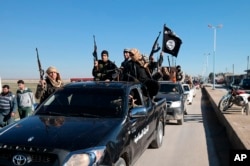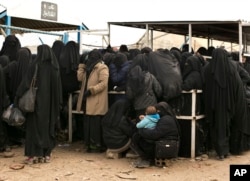For years, Syria’s civil war was largely a frozen conflict, with the country effectively divided into areas controlled by President Bashar Assad’s government in Damascus, various opposition groups and Syrian Kurdish forces.
But on Friday, as the conflict entered its 14th year, observers said violence was increasing again while the world’s attention was focused on other crises such as Russia’s attack on Ukraine and Israel’s war with Hamas in Gaza .
Ali Ahmed burns olive branches in a stove to warm his damaged house in the village of Narab in the northwest of the opposition-held Idlib enclave.
The house came under attack in the latest round of government shelling. Still, it’s in better condition than many of the surrounding homes that were reduced to rubble. When a new round of bombing began, Ahmed would leave for a while, staying in a nearby camp for displaced persons until the situation calmed down and he could return and repair the damage.
“We came back for a day or two and then they started shelling us,” he said. “We were gone for a few days and then returned to the village to find our homes destroyed.”
The United Nations-backed Independent International Commission of Inquiry into Syria said this week that since October the country has experienced its worst wave of violence since 2020.
The war, which began as peaceful protests against Assad’s government in March 2011, has killed nearly half a million people and displaced half of the country’s pre-war population of 23 million.
The protests were part of the Arab Spring uprisings that swept much of the Middle East that year, but were brutally suppressed and soon turned into a full-scale civil war, with the intervention of foreign powers further complicating the situation. All parties to the conflict grew in strength and militancy, first with groups linked to al-Qaida and then with the Islamic State until it was defeated in 2019.
Russia has joined Iran as Assad’s biggest ally in the war, with Turkey backing a range of Syrian opposition groups and the United States backing Syrian Kurdish forces fighting the Islamic State. Israel has carried out air strikes against the Lebanese armed group Hezbollah and Iranian forces in Syria.
For years, battlefields in the war-torn country have been mired in stalemate.
The recent surge in violence began with a drone attack on a graduation ceremony at the government-controlled military academy in the city of Homs in October, which killed dozens of people.
The council said Syrian government and Russian-allied forces subsequently launched bombings across the opposition-controlled northwest, hitting “well-known and visible hospitals, schools, markets and internally displaced persons camps”.
Elsewhere, Israel has launched increasingly frequent attacks against Iran-linked targets in government-controlled areas of Syria, sometimes targeting civilians as well. Turkey has stepped up attacks on U.S.-backed Kurdish forces in northeastern Syria, while militants from Islamic State sleeper cells have launched sporadic attacks in different parts of the country.
There have also been unrest in opposition-controlled areas in recent weeks, with protests erupting in Idlib against the leadership of the al-Qaeda-linked Tahrir al-Sham group.
Due to the multiplicity and complexity of the conflict, there is currently no solution to the crisis in Syria.
During a recent visit to northwestern Syria, David Cardon, the United Nations deputy regional humanitarian coordinator for the Syrian crisis, said that the United Nations 2023 Humanitarian Response Plan called for more than $5 billion in funding, but only 38% of the required funds had been received. – This is the lowest level since the United Nations began issuing appeals.
He said that “4.2 million people in northwest Syria need help, 2 million of them are children” and 1 million of them are unable to go to school. “This is a lost generation.”
Syria’s suffering was compounded by the devastating 7.8 magnitude earthquake on February 6, 2023, which killed more than 59,000 people in Turkey and Syria. Some 6,000 people have been killed in Syria alone, mainly in the northwest, where most of the 4.5 million people rely on humanitarian aid to survive.
U.N. agencies and other humanitarian organizations have struggled to fund projects that provide a lifeline to Syria due to donor fatigue, the COVID-19 pandemic and conflicts that have erupted elsewhere in recent years.
The United Nations World Food Program estimates that more than 12 million Syrians lack regular access to food and announced in December that it would cease its main aid program in Syria in 2024.
Follow us on Google news ,Twitter , and Join Whatsapp Group of thelocalreport.in

